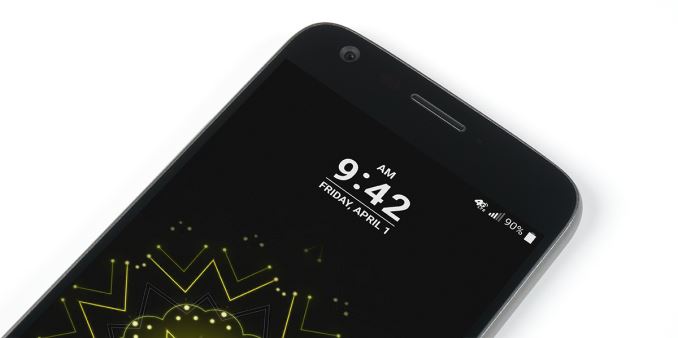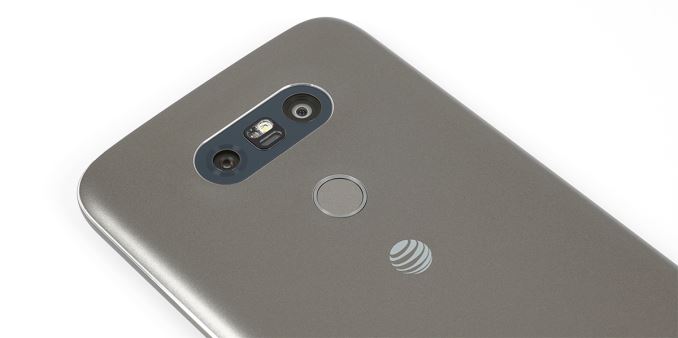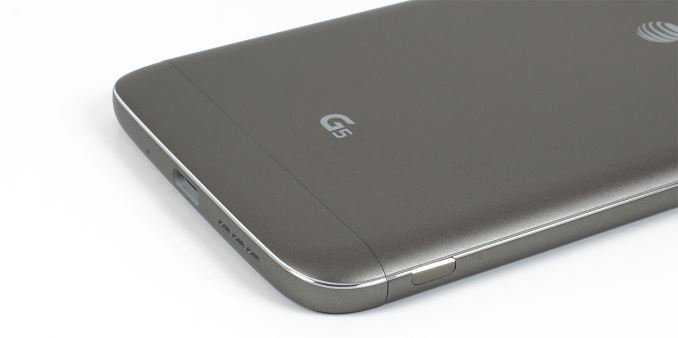The LG G5 Review
by Matt Humrick on May 26, 2016 8:00 AM EST- Posted in
- Smartphones
- Snapdragon
- Qualcomm
- LG
- Mobile
- Snapdragon 820
- LG G5
Final Words
With so many smartphones to choose from, it’s difficult for any one device to stand out. This is especially true for flagships that come packed with the best hardware and nearly every feature available. The implementation of these features and how they contribute to a positive user experience—a bright screen with accurate colors, a fingerprint reader that’s fast and accurate, a high resolution camera that actually takes good pictures, software enhancements that improve usability and customizability without adding bloat—was a differentiator in the past, but I would argue that with the smartphone market maturing and the price modern flagships sell for, there’s little room for compromise here either.
The G5 comes with an impressive list of hardware, but combining a removable battery with an aluminum unibody design is the G5’s big innovation and highlight feature. LG’s mechanism works well, with two minor exceptions: The chin section requires some work before it pulls free and the plastic battery retention scheme raises some concern about durability.
The modularity this design affords is a bonus, but we’re not sure this idea will catch on. Currently there’s only two modules available: the LG CAM Plus, which is a hand grip that adds physical buttons for some camera controls and comes with its own larger battery, and the LG Hi-Fi Plus with B&O PLAY, which adds a Hi-Fi DAC for audio playback (not available in the U.S.). There is an HDK and SDK, which opens the door for third-party modules in the future, but the G5 will need to sell in sufficient quantities to make it worthwhile for companies to develop them. Also, the design of any future LG phones will need to be dimensionally compatible with the G5 or the current modules will no longer work. Maintaining this design constraint for more than a couple generations seems impractical.
The G5’s design and materials are a big departure from previous G Series phones. While the appeal of its new appearance is open for debate, we can definitively say that its ergonomics are excellent. The rounded corners and curved back edges eliminate pain points when holding the phone, and the polished step where the back meets the sides provides enough purchase to keep the phone from feeling slippery. The front is covered by LG’s 3D Arc Glass, which adds a large radius along the top edge where the speaker is located. This too serves an ergonomic purpose: It helps the phone lay more naturally against your ear and eliminates another sharp edge.
With a Snapdragon 820 SoC, 4GB of LPDDR4 RAM, and UFS 2.0 storage, the G5 uses much of the same internal hardware as other flagship phones of its generation. It’s no surprise then that it delivers excellent performance. While the Kirin 950 and 955 SoCs in Huawei’s Mate 8 and P9, respectively, perform better than the G5’s Snapdragon 820 in our system tests, and the G5 is a tick slower than its peers in our web tests, its Adreno 530 GPU is a top performer and the phone feels plenty fast in general.
There are several implementation issues that negatively impact the G5’s user experience, however, starting with the display’s lack of calibration. It’s exceedingly cold white point gives the screen a noticeable blue tint and grayscale and sRGB color accuracy are poor. The G5’s LCD display is capable of reaching an impressive 800 nits brightness using LG’s Daylight Mode feature with auto-brightness enabled, but this is only temporary. Over a period of two minutes, the display gradually dims until it hits a stable value of 405 nits. Peak brightness is even worse in manual mode: After reaching a peak value of 405 nits, the backlight drops to a stable value of only 334 nits after 45 seconds. LG is a leading supplier of LCDs for mobile devices, and its flagship phones should serve as a showcase for its technology. Sadly, this is not the case for the G5.
Besides the removable battery, the G5’s other semi-unique feature is its dual rear camera. While there are certainly uses for the second wide-angle camera, we feel that the image distortion that results from using a fisheye lens will severely limit how often it’s used. Using the two cameras together could potentially boost image quality for every picture taken and would be a better use of resources, rather than letting one of the cameras always sit idle.
The G5’s rear cameras do take excellent photos in bright light, equaling the Galaxy S7’s image quality, but fall short of expectations in lower-light conditions. The G5 still does well handling white balance and exposure; however, its images show a significant amount of noise that noticeably degrades quality. LG also has not significantly updated the G Series’ video recording capabilities in two years, which puts the G5 on par with current mid-range phones today.
Just below the dual rear camera module is another new feature for the G5: a combination fingerprint reader and power button. While it’s located in a convenient spot, its accuracy is very poor. I have not had this much trouble with a fingerprint sensor since the Galaxy S5. Even when the sensor works it takes multiple attempts. Having to punch in my pin code after five failed attempts was a regular occurrence. I had a similar experience with two different G5’s, so this issue is not because of a single faulty unit.
Ultimately, the G5, like the G4, ends up feeling like an upper mid-range phone rather than a true flagship. It does have a nice array of features, including a removable battery—a true rarity these days—and microSD support, along with excellent performance, but many of its features are poorly executed. If the G5’s price falls to $500 USD or less like it did with the G4, it would be easy to recommend, especially if you need the removable battery. At its launch price, however, it seems overpriced relative to the competition.














92 Comments
View All Comments
tipoo - Thursday, May 26, 2016 - link
The hot vs cold Discomark scores of the GS7 again show how aggressively Samsung boots things from RAM despite having plenty free. If you look at videos of people cycling through opened apps vs other phones you see the same thing. I wonder why Samsung hasn't tamped down on that yet, they have fast guts but make reloads slow because of it.
Andrei Frumusanu - Thursday, May 26, 2016 - link
RAM management is not the cause of the S7's scores in that benchmark, all apps were still in memory in the hot test.tipoo - Thursday, May 26, 2016 - link
Wouldn't a longer reload time indicate the phone is evicting more from memory than others, thus having to reload and take longer? "Warm" just means the app was opened, what the device does with the memory once something else is on screen is not in the benchmarks control.SteelRing - Thursday, May 26, 2016 - link
All I want for Christmas is an official Marshmallow update for my LG G2.... still the best phone I ever had. I cannot conceivably switch to anything else that does not have the wake/sleep feature simply by double tapping the glass. That was so ingenious and beautifully implemented in G2 without draining battery.lefty2 - Thursday, May 26, 2016 - link
I don't know what the OpenGL ES 3.1 / metal tests are for. OpenGL ES 3.1 and Metal are two completely different API's.Andrei Frumusanu - Thursday, May 26, 2016 - link
The test runs on GLES3.1 on Android and Metal on iOS.lefty2 - Thursday, May 26, 2016 - link
Yeah, but why benchmark two completely different API's on two different devices. The results are meaningless.Brandon Chester - Saturday, May 28, 2016 - link
They reflect the APIs used in actual 3D games and apps on their respective platforms. It's not an SoC comparison; smartphones are integrated systems and you can't separate them from their operating system. To say the results are meaningless is simply incorrect.tipoo - Thursday, May 26, 2016 - link
Until Vulkan arrives on Android, for now it means "the best you can do on this phones APIs". That the phones have more potential is immaterial until those lower level APIs arrive on them.tuxRoller - Thursday, May 26, 2016 - link
Vulkan is available on android**N
:)
Regardless, AT can enter their assorted Nexii into the preview.